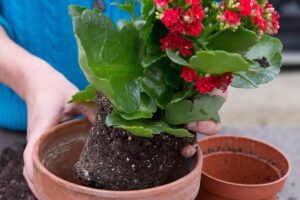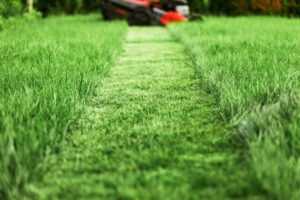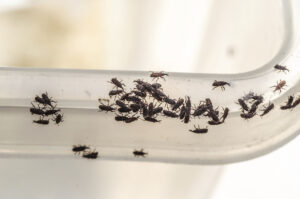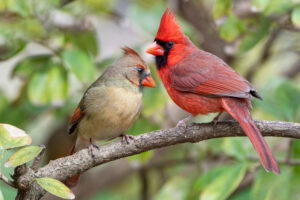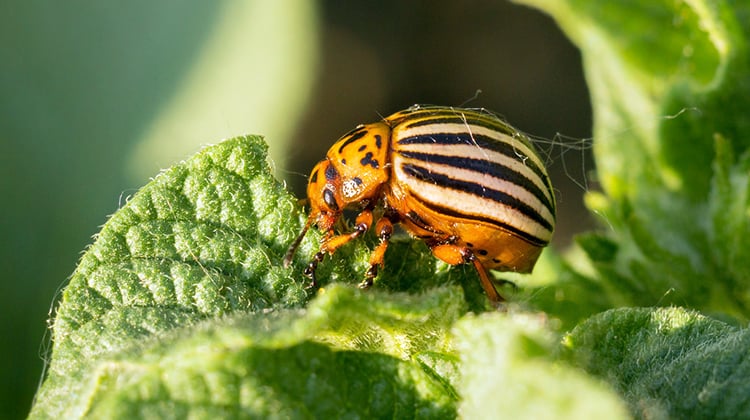
Potato bugs, also known as Colorado potato beetles or potato bugs, are notorious pests that can wreak havoc on potato crops and other members of the nightshade family. Recognizing these pests is crucial for implementing effective control measures and protecting agricultural yields. In this article, we delve into the physical characteristics and distinctive features of potato bugs to aid in their identification and management.
Introduction to Potato Bugs
Overview of Potato Bugs
Potato bugs belong to the species Leptinotarsa decemlineata and are commonly referred to as Colorado potato beetles due to their origins in the Rocky Mountain region of North America. These insects are notorious pests of potatoes, tomatoes, eggplants, and other plants in the Solanaceae family, capable of causing significant damage to crops if left unchecked.
Importance of Identification
Identifying potato bugs is essential for implementing timely and targeted control measures to mitigate crop damage and minimize economic losses. By understanding the physical characteristics and distinctive features of these pests, growers and gardeners can effectively monitor populations, implement integrated pest management strategies, and preserve the health and productivity of agricultural systems.
Physical Characteristics of Potato Bugs
Size and Shape
Potato bugs exhibit distinct size and shape characteristics that distinguish them from other insects and pests.
Body Structure
Potato bugs have a robust, oval-shaped body with a hardened exoskeleton, providing protection from predators and environmental hazards. Their bodies are divided into three distinct segments: the head, thorax, and abdomen, each serving specific physiological functions.
Length and Width
Adult potato bugs typically measure between 8 to 12 millimeters in length, with females often slightly larger than males. Their bodies are relatively flat and broad, enabling them to maneuver through dense foliage and plant structures with ease.
Coloration
Potato bugs display distinctive coloration patterns that aid in their identification and camouflage within their natural habitats.
Markings and Patterns
The most notable feature of potato bugs is their alternating black and yellow stripes along the length of their wing covers, known as elytra. These stripes create a striking contrast against the insect’s reddish-orange body, making them easily recognizable in the field.
Variations Across Species
While the classic coloration pattern of black and yellow stripes is characteristic of most potato bugs, variations in coloration and markings may occur among different geographic populations and species. These variations can range from subtle differences in stripe width and intensity to unique color patterns and aberrations.
Distinctive Features of Potato Bugs
Antennae
Potato bugs possess antennae that play a crucial role in sensory perception and communication.
Shape and Length
The antennae of potato bugs are relatively short and stout, consisting of a series of segmented structures that enable tactile and olfactory detection of environmental cues.
Sensory Functions
The antennae of potato bugs function as sensory organs, detecting chemical signals, pheromones, and environmental stimuli such as temperature and humidity. These sensory inputs help potato bugs navigate their surroundings, locate suitable hosts for feeding and reproduction, and avoid potential threats or hazards.
Legs and Appendages
Potato bugs have six legs and various appendages adapted for locomotion, feeding, and defense.
Number and Arrangement
Each potato bug possesses three pairs of jointed legs arranged along the ventral surface of the thorax. These legs are equipped with specialized structures such as claws and adhesive pads, enabling the insect to grip and manipulate plant tissues during feeding and movement.
Functional Adaptations
The legs and appendages of potato bugs are adapted for specific functions, including walking, climbing, and grasping plant surfaces. Additionally, specialized structures such as spines and hairs may be present on the legs to enhance traction and stability on various substrates.
Behavior and Habitat of Potato Bugs
Feeding Habits
Potato bugs are voracious feeders that primarily target plants in the Solanaceae family, including potatoes, tomatoes, eggplants, and peppers.
Diet and Preferences
Potato bugs feed on both foliage and reproductive structures of host plants, causing damage to leaves, stems, flowers, and fruit. They are particularly destructive during the larval stage, consuming large quantities of plant tissue and defoliating entire crops if left unchecked.
Feeding Behavior
Potato bugs exhibit both chewing and rasping-sucking feeding behaviors, using their mandibles to chew and consume plant tissues while also utilizing a specialized proboscis to extract plant juices and sap. This dual feeding strategy enables them to exploit a wide range of plant species and tissues for nutrition.
Habitat Preferences
Potato bugs are adaptable insects capable of thriving in diverse habitats and environmental conditions.
Environmental Conditions
While potato bugs prefer warm, temperate climates with adequate moisture and sunlight, they can tolerate a wide range of environmental conditions, including both dry and humid environments. However, they are most active and prolific in regions with mild winters and extended growing seasons, where host plants are abundant and suitable for reproduction.
Geographic Distribution
Potato bugs have a broad geographic distribution across North America, Europe, Asia, and other regions with suitable habitats and host plants. They are commonly found in agricultural fields, gardens, and natural landscapes where solanaceous crops are cultivated, but may also inhabit urban and suburban environments where ornamental plants are grown.
Tips for Identifying Potato Bugs
Visual Characteristics
Identifying potato bugs requires careful observation of key visual characteristics and features that distinguish them from other insects and pests.
Key Features to Look For
When inspecting plants for potato bugs, look for the distinctive black and yellow stripes along the wing covers, as well as the reddish-orange body coloration and robust body shape. Pay attention to the size and shape of the insect, noting any variations or aberrations in coloration and markings.
Differentiating from Similar Species
While potato bugs may resemble other beetles and insects at first glance, their unique coloration patterns and body structure set them apart from similar species. Take note of any differences in size, shape, and coloration, and consult field guides or online resources for assistance in accurate identification.
Resources for Further Identification
For those seeking further assistance in identifying potato bugs, there are numerous resources available, including field guides, online identification tools, and expert entomologists.
Field Guides and Online References
Field guides and reference books on insect identification often include detailed descriptions and illustrations of potato bugs and other related species, making them valuable resources for growers and gardeners. Online databases and websites dedicated to insect identification also provide comprehensive information and images for easy reference.
Expert Consultation
In cases where visual identification is challenging or inconclusive, consulting with expert entomologists and agricultural extension agents can provide valuable insights and guidance. These professionals possess specialized knowledge and expertise in insect taxonomy and biology, allowing them to accurately identify potato bugs and recommend appropriate control measures.
By familiarizing themselves with the physical characteristics, distinctive features, and habitat preferences of potato bugs, growers and gardeners can effectively identify these pests and implement targeted control strategies to protect crops and minimize economic losses. With proper monitoring and management practices in place, potato bugs can be managed effectively, preserving the health and productivity of agricultural systems and ensuring the success of potato and solanaceous crops.


